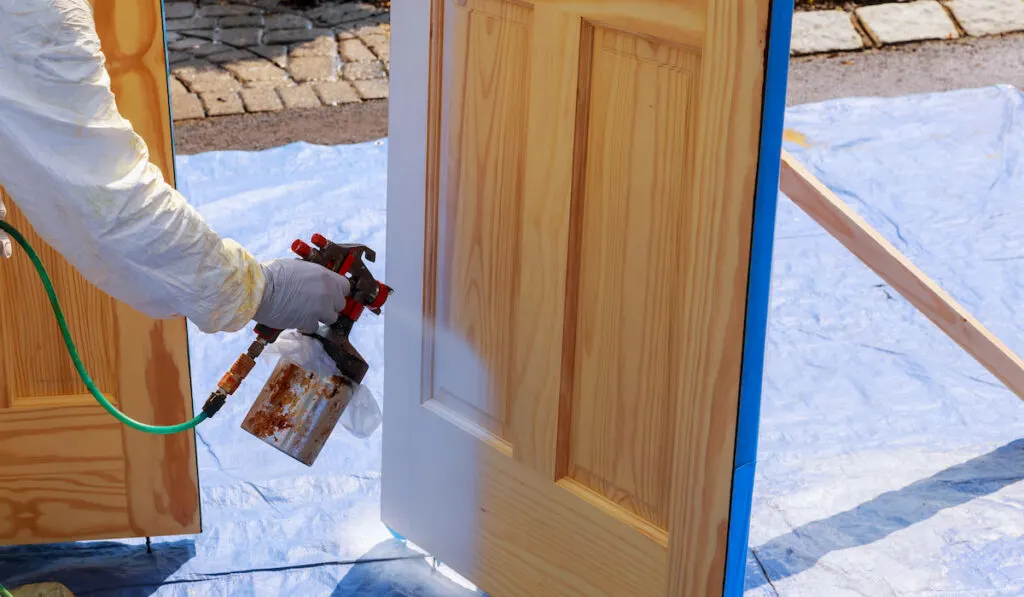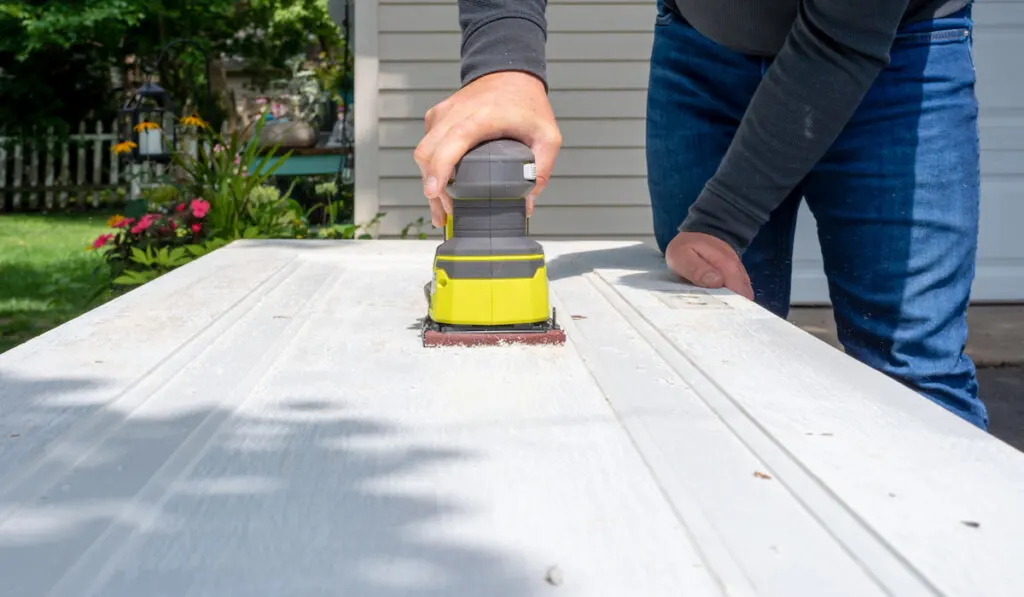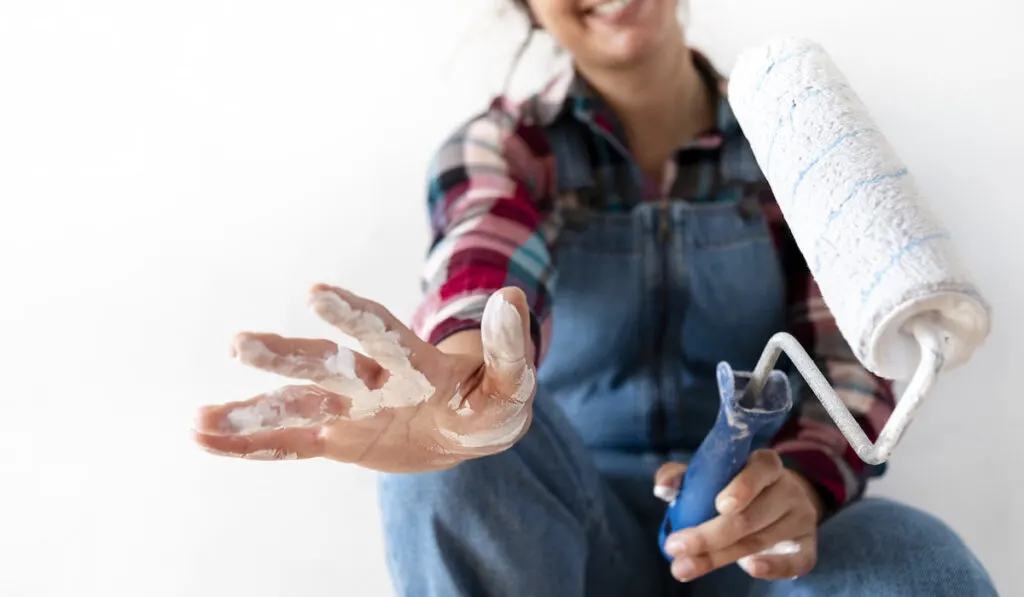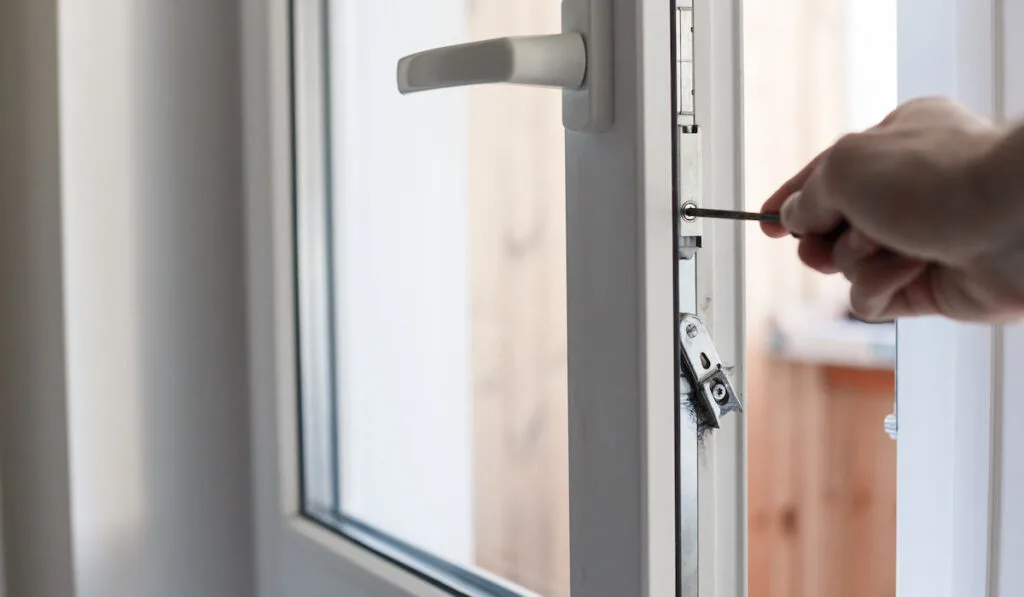*This post may have affiliate links, which means I may receive commissions if you choose to purchase through links I provide (at no extra cost to you). As an Amazon Associate, I earn from qualifying purchases. Please read my disclaimer for additional details.
After putting in the effort to paint your door, it can be pretty frustrating to see it get stuck to the jamb and sill. Keeping your door open till the paint dries is a good way to prevent sticking. But then, for security reasons, you may not want to leave your door open for that long.
You wouldn’t want to be stuck between choosing to leave your door open for the paint to dry and letting it stick to the jamb and sill. Thankfully, you do not have to settle for either choice because there are many ways to keep doors from sticking after painting.
Below, we discuss four ways to keep doors from sticking after painting. We also go over ways to unstick a door.
Table of Contents
4 Ways to Keep Doors From Sticking After Painting
You must combine multiple methods to keep your door from sticking after painting it to get the best outcome. To make this combination easy for you, we discuss four ways to keep doors from sticking after painting in a stepwise manner.

1. Paint the Door at an Optimal Time
Choosing to paint your door at a time that favors the drying of the paint is one way to keep the door from sticking after painting. It makes sense; if the paint dries quickly, the chances of the door sticking to the sill and jamb will drop significantly.
The best time to paint a door is when the weather is warm but not humid.
The warmth from the atmosphere will promote the evaporation of the paint solvent, making it dry faster. High humidity will slow down evaporation, so low humidity is most desirable.
If you try painting your door on a rainy or humid day, it will not dry quickly. Similar outcomes apply if you paint on a cold day.
Also, start the painting early in the morning, so there’s a chance the door will be dry before the day ends.
2. Prep the Door Correctly Before You Paint It
Preparing your door allows the paint to have a smooth finish. With a smooth finish, no spot on the door will promote sticking.
The following door preparation procedures will help ensure that your door does not stick after painting.
Fill Holes in the Door
Fill any cavities in the door with a wood filler and allow to dry.

Sand the Door
Sanding removes the current paint and any lumps on the door, leaving a smooth surface. If the surface of your door is smooth, the paint finish will be smooth. In turn, if the finish is smooth, the chances of paint sticking will be lower.
If the door is already attached to the hinge, disconnect it before sanding.
You may sand with a piece of sandpaper or an electric sander – it all depends on what you want. But if you want speed, efficiency, and a very smooth finish, you should use an electric sander.
Protect the Door Handles and Hinges
Another way to reduce stickiness is to cover the handles and hinges of the door. Use painter’s tape to cover every inch of the door hinges and handles. This is typically one of the first few things you should do while prepping the door for painting.

Cover the Floor
It is almost impossible not to spill some paint around the working area when painting. Unfortunately, the floor might get sticky with paint all over it.
To keep your floor from getting sticky, cover it. You could use a newspaper, a rag, or anything else that can protect the floor from paint.
Prime the Door
Priming involves applying a primer on the sanded door. With your door primed, the paint will stick well. Also, the door will not get stained readily.
Leaving dust on the door before priming will ruin the process. So, before priming, ensure you remove all residue from sanding. You could use a damp cloth to wipe the dust off for best results.
After dusting the door, apply the primer and allow it to dry.

3. Follow an Appropriate Painting Process
If you follow an appropriate process while painting, you won’t have to worry about the door sticking since the finish will come out perfect.
Before you start painting, ensure the primer is dry.
You may use either oil-based paint or latex paint for your doors. It all depends on what you want.
In the past, oil-based paints were the preferred option because of their durability, finish, stain resistance, and more. But advancements in latex paint production have afforded the market some durable, stain-resistant paints with smooth finishes.
If you are painting an exterior door, remember to use exterior paint. But if it is an interior door, use interior paint.
To paint your door, do the following:
- Place the door in a work area that will provide protection from paint stains.
- Lay the door flat on the ground.
- Paint one side of the door and let it dry. Latex paint should dry in as little as 1 to 2 hours, but if you want to recoat latex paint, you should wait 4 hours. Oil-based paint dries in around 6 to 8 hours, but you should wait 24 hours if you intend to recoat oil-based paint. The recoating times are vital; if you do not follow them, you may keep the paint from drying properly, making the door sticky.
- Once the paint is dry, flip the door to the other side and paint.
- When the paint on both sides of the door is dry, move to the edges and paint those.
- Once all the sides of the door are dry, examine the paint finish for bubbles and bumps. If there’s any, sand those spots and repaint them.
- You may recoat all sides of the door if necessary. Just ensure the paint layers are not too thick.
- Once you are sure the door is very dry, reattach it to the hinges. (When dry, the paint will not feel sticky to your fingers.)
Note: if you do not want to remove the door or leave the door detached for painting, then skip steps 1-2 and instead place a dropcloth under the door.
4. Create a Barrier with Wax Paper
If you don’t want to remove the door from its hinges, creating a barrier with wax paper is another way to keep your door from sticking after painting.
When you place wax paper between the painted door and the door jamb, it will prevent contact between them. Of course, if the door and door jamb do not touch, they cannot stick to each other.
If you intend to use wax paper to keep your door from sticking, do not use it when the paint is still wet. If you do, you will ruin the paint finish. Even worse, the paper may stick to the door.
In place of wax paper, you may apply white candle wax on the edges of the door. White candle wax will have about the same effect as wax paper.

How to Unstick Your Door
If your door is already sticking to the jamb or sill, the following are a few ways to unstick it.
Lubricate the Door at the Sticky Points
One way to free your door from sticking to the frame is to lubricate it. You can do the lubrication with wax, soap, petroleum jelly, or any other substance with similar slippery properties.
To lubricate your door, you must determine the sticky points first. So open the door slowly. While trying to open it, note the spots where the door sticks to the frame, then apply the lubricant to those spots.
Sand the Sticky Spots
In some cases, lubricating the door’s sticky spots might not be effective. This happens because the friction is more than the lubricant can handle.
When lubricants do not help with the sticky spots, you can sand those spots instead. Sanding can reduce the unevenness on the door’s surface, making it smooth and less sticky.
You can plane down the door with a jack plane if sanding does not smooth it enough.
Tweak the Hinge Pin
Sometimes, your door feels like it sticks because its weight is not uniformly distributed.
One of the reasons a door may have uneven weight distribution is a short hinge pin. So, you could try replacing your hinge pin with a longer hinge pin to unstick your door.
Of course, the fix above applies to doors with a hinge pin.

Change the Position of the Hinges
If adjusting the hinge pins does not work, you could try changing the position of the hinges. This fix can help distribute the door’s weight more uniformly, fixing the stickiness.
Bring the Room to Low Humidity
Your door will likely absorb and retain moisture if exposed to high humidity. By absorbing moisture, the door will swell, and when it swells, it will not easily fit through the door jamb. This will make it seem like it’s sticky.
You can reduce humidity with a dehumidifier. Improving ventilation and fixing sources of water leaks can also help reduce humidity.
